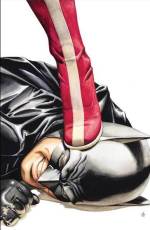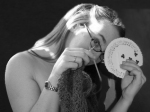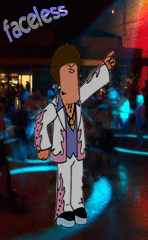| View previous topic :: View next topic |
| Author |
Message |
luke

Joined: 11 Feb 2007
Location: by the sea
|
 Posted: Fri Apr 17, 2009 3:32 pm Post subject: The truth about Columbine Posted: Fri Apr 17, 2009 3:32 pm Post subject: The truth about Columbine |
 |
|
|
|
The truth about Columbine
Ten years ago, two teenagers walked into a Colorado school and massacred 13 people. The killings sparked wall-to-wall media coverage around the world - much of which has since turned out to be nonsense. Andrew Gumbel, who reported on the aftermath, explains what really happened that day - and why
Exactly 10 years ago on Monday, the world woke up to learn that two more unhinged American teenage misfits had snapped after years of bullying at the hands of the "jocks", the sporting overlords of their universe, and gone on a murderous rampage with semi-automatic weapons through their suburban high school.
Or that's the version we were told, anyway.
The teenagers were called Eric Harris and Dylan Klebold, and their school was Columbine High, an idyllic sounding place nestled between the Denver metropolitan area and the foothills of the Rocky Mountains. What is indisputable is that Columbine quickly became a byword for the nightmarish phenomenon - now seemingly a worldwide contagion - of school shootings. It was the bloodiest, creepiest, most vivid school attack anyone at the time could remember and remains, to this day, the episode the American popular imagination just can't seem to shake.
Harris and Klebold did not just gun down their victims in cold blood. They laughed and hollered while they were doing it, as though they were having the time of their lives.
In contrast to previous American school shootings, which had unfolded in hard-to-reach locales such as West Paducah, Kentucky, or Jonesboro, Arkansas, this one happened half an hour's drive from a major media hub. Denver television crews got there while the horrors were unfolding, and the cameras did not stop rolling for a week. That, in retrospect, may not have been an entirely good thing.
From the start, the images seemed to suck viewers right into the heart of the mayhem. One of the dead was left stranded in a parking lot, which terrified fellow students would eventually have to pass as they ran out at the end of their ordeal. The cameras captured it all. Another victim, already badly wounded in the head, arm and legs but seized by a compulsion to get out of the school at any cost, somehow pirouetted his broken body across a window ledge and let himself tumble into the arms of two waiting officers. That, too, was broadcast live on international television.
What we were seeing, though, was not quite what we thought. By the time the TV crews arrived, Harris and Klebold had in fact ended their rampage and turned their weapons on themselves. The sporadic shooting heard over the next three hours over the incessant wah-wah of the fire alarm came, in fact, from Swat teams pumping bullets into locked classroom doors in a painfully slow and clumsy effort to track down the killers. Only later did the authorities realise Harris and Klebold were already lying dead in the library, along with 10 of their 13 murder victims.
The illusion of an ordeal lasting for hours - some television stations even described it as a hostage stand-off - was just the first of many misconceptions. Harris and Klebold, we were told, were members of a campus group of losers and Marilyn Manson-worshipping goths called the Trenchcoat Mafia, who had few friends and attracted only derision from the cool kids. They not only hated jocks, they were racists who picked 20 April for the attack because it was Hitler's birthday. Supposedly, they also had a grudge against evangelical Christians. A story soon spread that one of the murder victims in the library, Cassie Bernall, had been asked at gunpoint if she believed in God. When she answered yes, Harris laughed and pulled the trigger. The story inspired dozens of sermons, spawned a best-selling book co-authored by Bernall's mother, and elevated Bernall to martyr status far beyond Columbine.
Those of us who covered the shootings repeated at least some of these stories. We had no reason not to. They were confirmed, if not amplified, by the Jefferson County officials who gave news briefings several times a day. How were we to know that John Stone, the county sheriff, was winging it, telling us, for example, that the boys had fully automatic weapons and at least one accomplice, when these were no more than his own wrongheaded assumptions?
The stories were repeated, too, by traumatised students who drifted towards the television cameras stationed in a park across the street from the school. We could not guess that these students did not know Harris and Klebold - this was a school with 2,000 students - and were, to a large extent, repeating things they were themselves picking up from the television coverage. I had long conversations with local teenagers, both in the park and in a local shopping mall, about the oppressiveness of jock culture and the enormous pressures of feeling out of place in a rigidly conformist, predominantly white middle class community. It sounded like a plausible explanation at the time.
Much of what we reported, though, was simply wrong, as attested by tens of thousands of official documents and other evidence that has at last seen the light of day after years of suppression by the local authorities. As the Colorado-based journalist Dave Cullen tells in his gripping and authoritative new book Columbine, Harris and Klebold had plenty of friends, did pretty well in school, were not members of the Trenchcoat Mafia, did not listen to Manson, were not bullied, harboured no specific grudges against any one group, and did not "snap" because of some last-straw traumatic event. All those stories were the product of hysteria, ignorance and flailing guesswork in the first few hours and days.
The truth was more sinister. Their ambition, harboured for about a year and a half and chronicled meticulously on Harris's website and in the boys' private journals, recovered after their deaths, was to blow up the entire school. Not to get at anyone in particular, but because they hated the world and intended to have fun annihilating as much of it as they could.
In other words, it wasn't meant to be a school shooting at all, but something much bigger. Harris, in particular, would have been insulted at the thought of being remembered as a mere shooter. "I fucking hate the world," he wrote in the very first line of his journal, and when he said "the world" he meant a whole lot more than 15 people.
The two boys were in fact very different.
Harris quietly despised the people he took so much trouble to charm and could not wait to see them all die horrible deaths. "I want to tear a throat out with my own teeth like a pop can," he wrote in his journal. "I want to grab some weak little freshman and just tear them apart like a fucking wolf. Strangle them, squish their head, rip off their jaw, break their arms in half, show them who is God." Klebold, by contrast, was a depressive, perpetually racked by the idea that he was a failure, despite having a loving family and privileged background.
They made quite a pair, each feeding off the other's sewer of raw emotion. Their planning, meanwhile, was nothing if not meticulous. First, they wanted to detonate two propane bombs in the cafeteria, killing not only the 600 or so students taking early lunch but also students in the library above, which they hoped would come crashing down. Then, as the rest of the school swarmed for the exits, they would open fire with semiautomatic weapons from two positions in the car park.
Assuming they survived that phase - they did not expect to - they would then ram their cars, loaded with more propane explosive, into arriving rescue workers, television news teams and police for one ghastly final conflagration. They were hoping for a death toll of at least 2,000, matching the student population of the school.
As it was, their homemade bombs did not detonate, and they were forced to improvise. They were indeed wearing long black coats, not because of any campus affiliation but simply to hide their arsenal of shotguns, semiautomatic machine pistols, pipe bombs, knives and small carbon dioxide canister bombs Harris called "crickets". They shot two students on the way in, then spent 49 terrifying minutes patrolling the hallways, the cafeteria, and the stairs before carrying out their worst carnage in the library.
Bernall, it turns out, was shot and killed outright. She was a recent convert to evangelical Christianity, after a deeply troubled early adolescence, and perhaps for that reason her story became confused with that of another student. It was Valeen Schnurr, who was asked, by Klebold, if she believed in God, and answered yes. She was then spared. If the killers hated Christians, they were distinctly uneven in how they applied that hatred. Likewise, if they hated jocks, they didn't make any special effort to target them. At one point they joked about killing anyone in a white hat; one boy cowering beneath a desk quickly pulled a white cap off his head, and lived.
The question of Nazi sympathies is a little more complicated. Harris certainly felt drawn to the Nazis' genocidal mania - at one point in his journal he quotes Himmler approvingly and comments, "Here was someone who got it!" But the fact that the attack took place on Hitler's birthday was a coincidence. The boys had decided on 19 April - the anniversary of the botched government siege at Waco, Texas, in which 76 people perished by fire in 1993, and also the anniversary of the 1995 Oklahoma City bombing. As it was, the plan was pushed back 24 hours because the local drug dealer who had promised to provide the boys with their ammunition did not come through on time.
It was the first of many disappointments for a pair of killers aiming for even greater infamy than they ultimately achieved. Everything about the Columbine disaster is tinged with failure. The county sheriff's department knew Harris and Klebold had been making pipe bombs and threatening their schoolmates. They applied at one point for a warrant to search Harris's house, but the warrant was never executed. The school, meanwhile, failed to recognise the danger, even though Harris spilled much of his venom on his publicly accessible website, and even though Klebold wrote an essay two months before the attack about a man gunning down innocents and enjoying it. Klebold's teacher was deeply concerned, but the authorities ultimately bought his explanation that it was "just a story".
On the day of the attacks, the Swat teams were so hesitant to swoop in mid-killing that they ended up compounding the disaster, allowing a PE teacher to bleed to death when early intervention would almost certainly have saved his life. The sheriff's department was dysfunctional from start to finish, preferring to cover up what it had known about the killers and doing nothing to contradict the nerds-targeting-jocks story. The bulk of the withheld investigation documents were finally released in 2006, the result of years of lawsuits, but not all: a deposition of the parents of the two killers, taken over several days in 2003, remains under seal until 2027.
In some ways, Columbine is unlike other school shootings because of its sheer scale. In other ways, though, it is both a reference point and even an inspiration to successive killers - in Germany, Finland and Britain as well as the US. Seung Hui Cho, the disturbed gunman who killed more than 30 students at Virginia Tech in 2007, called Harris and Klebold "martyrs".
We can perhaps be grateful that the Columbine killers saw themselves in media-age terms as performers, who chronicled their thoughts and actions in great detail. As a result, we now know a whole lot more about how to recognise potential school shooters, and how to limit the damage once the shooting starts. The Swat teams at Virginia Tech did not hesitate for an instant, almost certainly saving the lives of a dozen or more people. At scores of high schools around the US, meanwhile, teachers and mental health professionals have taken death threats or the discovery of weapons with the utmost seriousness.
The piece of the puzzle that remains most troubling is the role of the media. Harris and Klebold were playing to the cameras and there is evidence that many of their successors were motivated at least in part by the promise of instant mass-media notoriety.
The influence of the media on real-life acts of violence is hotly debated and far from proven, but here is one statistic. Just about every recorded instance of mass murder given saturation coverage on US television is followed by another mass murder, somewhere around the country, within two weeks. Most of these smaller scale copycat killings don't make headlines, but are picked up by Park Dietz, a criminal profiler who has been offering violence prevention advice to the US TV networks for years.
"It's not that the news coverage made the person paranoid, or armed, or suicidally depressed," Dietz says. "But you've got to imagine this small number of people sitting at home, with guns on their lap and a hitlist in their mind. They feel willing to die. When they watch the coverage of a school shooting, it only takes one or two of them to say, 'That guy is just like me, that's the solution to my problem, that's what I'll do tomorrow.'" We may be only beginning to reap the whirlwind that Eric Harris and Dylan Klebold unleashed.
from http://www.guardian.co.uk/world/2009/apr/17/columbine-massacre-gun-crime-us |
|
| Back to top |
|
 |
Skylace
Admin

Joined: 29 Apr 2006
Location: Pittsburgh, PA
|
 Posted: Fri Apr 17, 2009 3:40 pm Post subject: Posted: Fri Apr 17, 2009 3:40 pm Post subject: |
 |
|
|
|
Maybe because I was in education so long and in the field of school counseling, this report is extremely old news.
For years this information has been reported and studied in the States. I don't know how many tv shows I have seen here with "the real" story and how many inservices I have had to go to on this specific shooting.
Not that the report isn't a good one, it's just about eight to seven years late. |
|
| Back to top |
|
 |
nekokate

Joined: 13 Dec 2006
Location: West Yorkshire, UK
|
 Posted: Fri Apr 17, 2009 7:37 pm Post subject: Posted: Fri Apr 17, 2009 7:37 pm Post subject: |
 |
|
|
|
| Gosh, you mean Marilyn Manson isn't to blame?! That's it; I'm burning his albums! |
|
| Back to top |
|
 |
faceless
admin

Joined: 25 Apr 2006
|
 Posted: Wed Sep 02, 2009 12:16 pm Post subject: Posted: Wed Sep 02, 2009 12:16 pm Post subject: |
 |
|
|
|
Teenagers accused of Columbine-inspired tragedy
Two teenagers will go on trial accused of hatching a Columbine massacre-inspired plot to blow up a school and shopping centre on the 10th anniversary of the tragedy.
02 Sep 2009
Matthew Swift, 18, of Denton, Greater Manchester, and a 16-year-old boy, who cannot be named for legal reasons, deny conspiracy to murder and conspiracy to cause explosions between November 11 2007 and March 15 this year. It is alleged they had drawn up plans to imitate the US school massacre in Columbine, Colorado, on April 20, 1999.
The trial at Manchester Crown Court is expected to begin on Wednesday afternoon.
------------------
This is the first I've heard of this - just as well they were shit at organising... |
|
| Back to top |
|
 |
|
|
|
|
You cannot post new topics in this forum
You cannot reply to topics in this forum
You cannot edit your posts in this forum
You cannot delete your posts in this forum
You cannot vote in polls in this forum
You cannot attach files in this forum
You cannot download files in this forum
|
Couchtripper - 2005-2015
|


